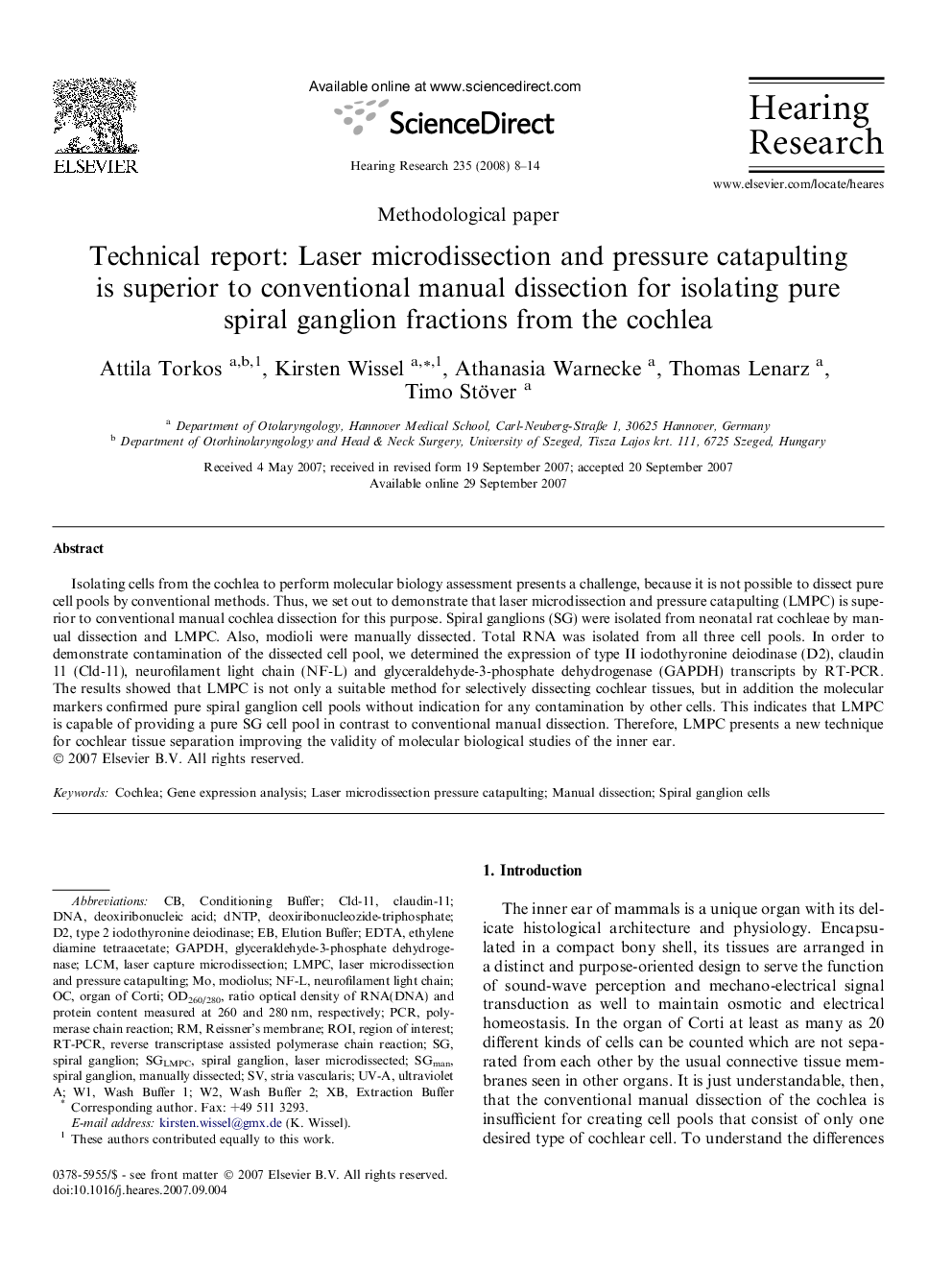| Article ID | Journal | Published Year | Pages | File Type |
|---|---|---|---|---|
| 4356137 | Hearing Research | 2008 | 7 Pages |
Isolating cells from the cochlea to perform molecular biology assessment presents a challenge, because it is not possible to dissect pure cell pools by conventional methods. Thus, we set out to demonstrate that laser microdissection and pressure catapulting (LMPC) is superior to conventional manual cochlea dissection for this purpose. Spiral ganglions (SG) were isolated from neonatal rat cochleae by manual dissection and LMPC. Also, modioli were manually dissected. Total RNA was isolated from all three cell pools. In order to demonstrate contamination of the dissected cell pool, we determined the expression of type II iodothyronine deiodinase (D2), claudin 11 (Cld-11), neurofilament light chain (NF-L) and glyceraldehyde-3-phosphate dehydrogenase (GAPDH) transcripts by RT-PCR. The results showed that LMPC is not only a suitable method for selectively dissecting cochlear tissues, but in addition the molecular markers confirmed pure spiral ganglion cell pools without indication for any contamination by other cells. This indicates that LMPC is capable of providing a pure SG cell pool in contrast to conventional manual dissection. Therefore, LMPC presents a new technique for cochlear tissue separation improving the validity of molecular biological studies of the inner ear.
